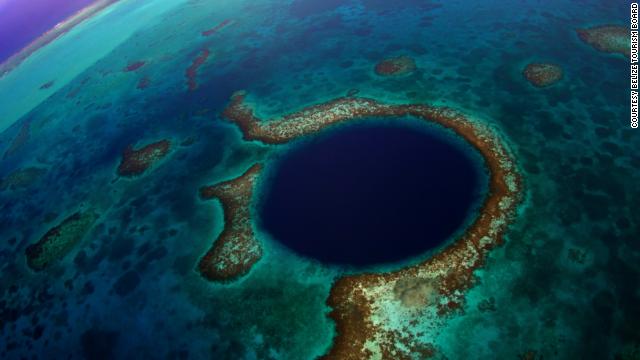Sediment analysis of Belize's Blue Hole indicates that a first-millennium drought may have led to Mayan decline.
STORY HIGHLIGHTS
- Investigation of Belize's "Blue Hole" indicates drought did in Mayan civilization
- Mayan civilization peaked in middle of first millennium; cities were abandoned by end of era
- "When you have major droughts, you start to get famines and unrest," says researcher
(CNN) -- To scuba divers and tourists, Belize's famous "Blue Hole" underwater cave is a wonder, one of the "10 most amazing places on Earth," according to the Discovery Channel.
To scientists, it's something more: evidence of the drought that is suspected to have led to the demise of the Mayan civilization.
New research reinforces that theory, Rice University Earth scientist Andre Droxler told LiveScience.
The team drilled cores from the Blue Hole sinkhole and a nearby lagoon. They found that the ratio of titanium to aluminum changed in the ninth and 10th centuries, a period when the Mayan civilization in the Yucatan Peninsula went into decline. More titanium means that heavier rains were affecting the region, since the runoff from the area's volcanic rock is rich in the element.
But from about A.D. 800 to 1000, the ratio between the two elements was much smaller, indicating that there was much less rainfall.
"When you have major droughts, you start to get famines and unrest," Droxler said.
The Mayan civilization, noted for its advances in astronomy and agriculture (not to mention that calendar system that some believed prophesied world devastation on December 21, 2012), dominated the Yucatan in the first half of the first millennium A.D. But by 900, most of the civilization's cities, located in present-day Guatemala, El Salvador, Honduras and southern Mexico, had been abandoned.
The question of why this happened has tantalized scientists and historians for decades.
The drought theory isn't new, but the findings of Droxler and his colleagues buttress other studies. In 2012, samples from a 2,000-year-old stalagmite also showed that drought had afflicted the region in the latter half of the first millennium A.D.
"The main finding was that a prolonged drought contributed to the collapse of Classic Mayan civilization," environmental archaeologistDouglas Kennett told LiveScience two years ago.
Droxler and his colleagues published their findings in Scientific Reports.

No comments:
Post a Comment